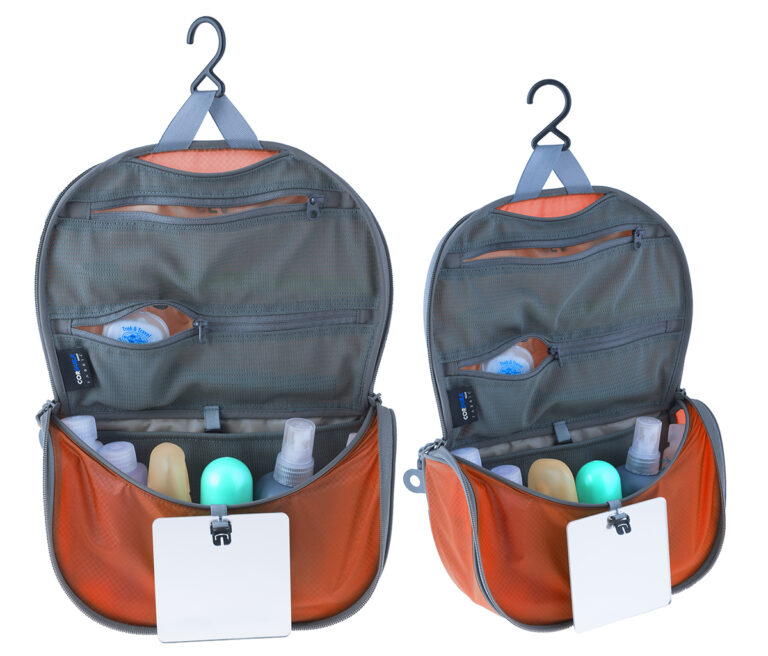OTM reader and commuter Luke Bakken
Luke Bakken noticed an omission in this month’s Guide to Buying Your first Adult Bike:
“I just wanted to point out that the guide left out one entire category
of bicycles that are appropriate for first-time buyers: recumbents.
While not as familiar (or inexpensive) as their upright cousins,
recumbents offer far superior comfort and some aerodynamic advantage over “wedgies”. I have been commuting on my recumbent up and down the South Hill for several years now and can attest to their hill-climbing ability (you may remember me in a photo from a way-past Out There issue on bicycle commuting [December 2004]).
Thanks!”
Luke
Thanks for the input Luke. You can read the article that Luke was featured in right here:
“Don’t Run Me Over I’m Just Biking to Work” (OTM 12/04)
Don’t Run Me Over I’m Just Biking to Work
Cycling Commuters Are Hardcore
“I come off the South Hill and it was not uncommon for my brakes to be non-existent by the time I crossed the river,” says Bill Evans. Fortunately for the rest of Evans is talking about riding his bike to work—not driving a truck. Bill Evans has gone “postal’’, not in a homicidal sense, but the sense that he tries not to let rain, sleet, or snow stop his year-round bike commute.
“In the wintertime conventional brakes have a real bad habit of icing up and to discontinue to work, so I’ve switched over to a bike with disc brakes,” says Evans, who does a 10-mile roundtrip to his job at Comcast each day. He’s discussing the crucial elements to winter cycling gear. That includes Finnish studded bicycle tires from a company called Nokian and bright reflective clothing. “A very good lighting system is an absolute necessity. I don’t feel you can have enough light in the wintertime, especially on the back,” adds Evans.
Sally Phillips, another year-round commuter, agrees with Evans about getting the right equipment. “I started on a road bike after a year I got a mountain bike which worked better for road conditions,” says Phillips. “I gradually picked up the pieces I needed for it.” Those pieces included flashing red LED taillights, tire-changing tools, a cover for the bike helmet with a neck gaiter, and the aforementioned studded bike tires. “I was falling down a lot before I got the studded tires,” admits Phillips, whose commute is about 12 miles roundtrip from her house to the Federal Building downtown. Phillips says she still looking for a better headlight, one powerful for her to see details in the road and make her visible to motorists.
Philips is a member of the Bicycle Alliance, and is known in local cycling circles as hardcore for the amount of all-weather miles she puts on her bike, although you can’t detect any hint of machismo in talking to her. “I’m kind of a clumsy person. I’m a clumsy biker too. I got better at maneuvering so that I wouldn’t hit an ice patch and fall over. It took a couple years to ride all year round. It’s not like I’m going to do it no matter what. I do it a great majority of the time but if it seems like it is going to be way too much effort or stress, worrying about how to maneuver in the snow then I will just walk and ride the bus home.”
Walk to work in weather too harsh to ride a bike? Talk like that might lead you to believe that bike commuters are either masochists or at least radical environmentalists. “There’s something about getting home at the end of the days and saying ‘You know what I didn’t use any gasoline today,’” says Evans. That’s no small feat. In an October 18th issue of the New Yorker journalist David Owen made of convincing case for New York City being the most environmental city in the country based simply because of it’s huge mass transit system and it’s extremely low gasoline and energy use per capita.
All the commuters that spoke to OTM for this piece were pleased with the environmental benefits of reduced emissions and gasoline consumption that come with bike commuting, but none of them put those benefits at the top of their list of reasons for doing it. Their main reason for bike commuting had to do with how it made them feel.
“The payback physically and mentally is just incredible. I’m in the best shape I’ve ever been in,” says Evans. Phillips says she has a hereditary disposition towards having colds. Since she started bike commuting she claims to have reduced her annual incidents of colds from six a year to less than one. “The idea that I read about is that this exercise actually has the function that a fever has,” says Phillips. “It’s your body raising its temperature up to kill off those germs. It’s like getting that benefit without having to go through the discomfort.”
Evans doesn’t know why so many people hurry home to get to the gym when they can just cycle their commute and be done with their exercise. That’s exactly how Phillips got started. She found herself having a hard time exercising when she got home from work. “When I started biking to and from work it took some of the need for motivation out of it. If you want to get back home you’ve got to ride home.”
Luke Bakken clearly likes the physical benefits of bike commuting. Even though he says he only commutes about twice a week when the weather’s good his commute is longer; 18 miles to Liberty Lake from the South Hill. “On my upright bike I would get shoulder and neck tension after 10 mile rides,” says Bakken. So he bought a short wheelbase recumbent bike from a company called Phantom for his longer commute. Recumbent bikes can cost anywhere from $600-to a few thousand—about 1.5 times more than a comparable road bike according to Bakken. “It’s the most comfortable bike you can ride,” says Bakken. “That’s the reason I started riding to work.”
Bakken reported that his employer, Getronics, is very supportive of bike commuting, offering a safe lock-up for bikes and shower facilities. Phillips and Evans said similar things about their employers. “They are real supportive of people who work for Comcast trying to commute by bike, bus or carpool, or alternative transportation,” says Evans. But are the motorists that they share the road with similarly supportive?
“About every second or third trip I get honked at or yelled at,” says Bakken. “But as long as you follow the rules of the road most people are pretty nice to you.
“Occasionally you’ll run into somebody who yells at you,” says Phillips. “That doesn’t happen very often. Once in the while it will be the other way. Someone will be driving by and give me the thumbs up.”
While all agree that Spokane is a great cycling town, they also agree on the need for more road shoulders and bike lanes. Evans is alarmed by moves he sees the city making. “The city of Spokane is slowly removing the bike lanes,” says Evans. “They removed the bike lane on 29th at Rockwood Blvd. They removed it in a way that creates a very serious traffic hazard. My concern is how many more bikes lanes are they going to take out?”
As for advice on starting up a bike commute these riders say pick your route very carefully for safety reasons and just do it. You may actually save time by not having to work exercise into you schedule. Phillips says she sometimes feels sorry for, “People in cars just trying to endure.”
“You can come up with 100 reasons not to do it, but once you start it just gets in your blood,” says Evans. “You feel better about everything. It becomes the journey not the destination. It makes my day when I can bike.” // Jon Snyder













